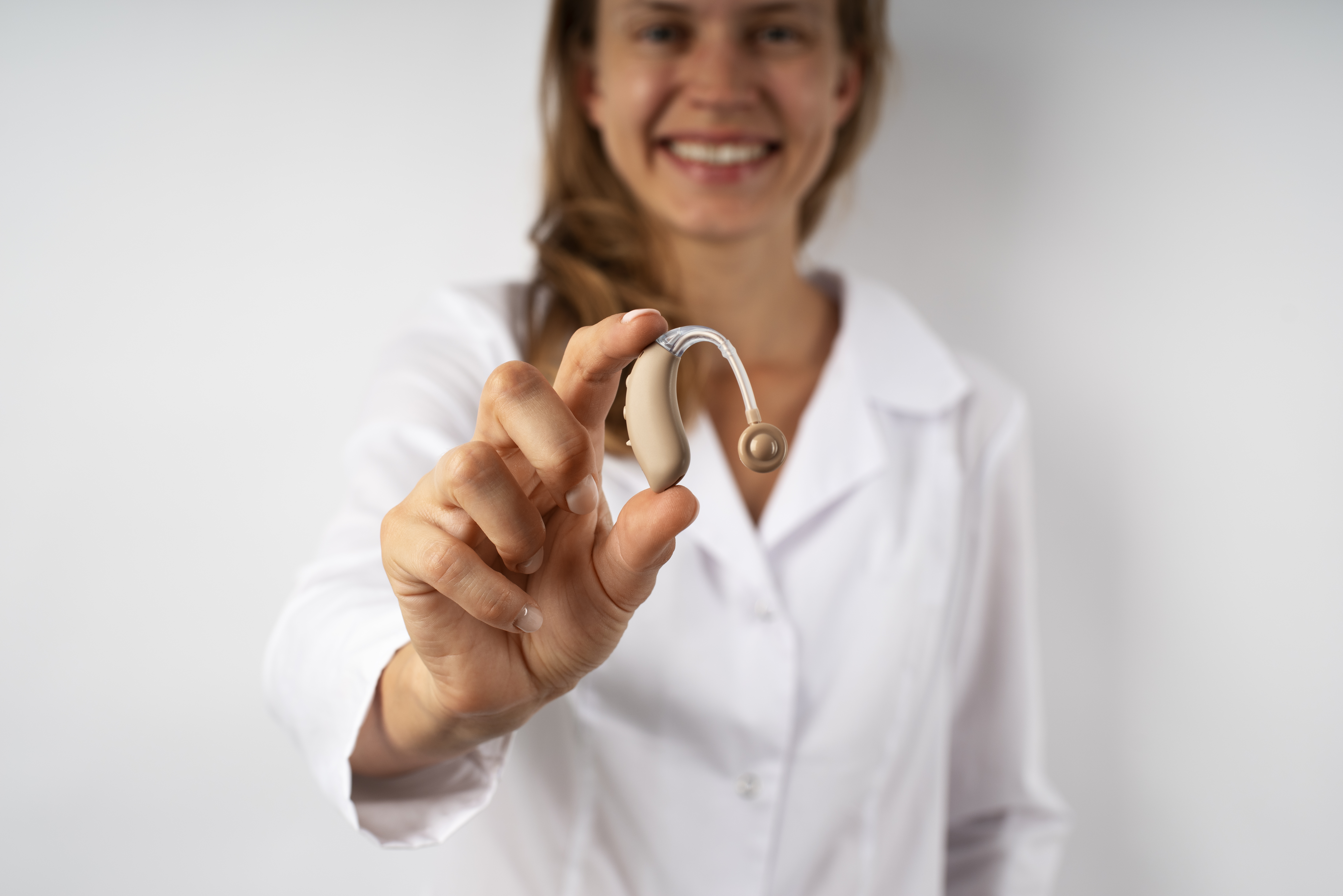TL;DR
Rechargeable hearing aids offer eco-friendly convenience but vary significantly in price ($500-$6,000). This guide provides actionable strategies for finding affordable, reliable models. Understand cost drivers (technology tiers, styles), evaluate long-term savings versus battery-powered alternatives, and set realistic budgets using insurance/assistance programs. Compare budget-friendly brands like Nearity's HearPod Pro ($269-$299), Lexie ($799+), and MD Hearing ($699+), with key features to prioritize: battery life, IP ratings, and noise reduction. Discover money-saving tactics including seasonal sales, refurbished options, and FDA-approved OTC devices ($200-$1,000). The resource includes financial aid options (Medicaid, VA), warranty considerations, and expert buying tips to balance cost and quality for mild-to-moderate hearing loss. Never compromise on essential functionality while maximizing value.
Hearing loss affects millions of people worldwide, and rechargeable hearing aids have emerged as a convenient and eco-friendly solution. However, the cost of these devices can be a significant concern. In this comprehensive guide, we'll explore how you can save money on rechargeable hearing aids without compromising on quality, covering everything from understanding costs to finding the best budget-friendly options.
Understanding the Cost of Rechargeable Hearing Aids
Breakdown of Rechargeable Hearing Aids Cost: Factors Influencing Price
The price of rechargeable hearing aids can vary widely, typically ranging from 500 to 6,000 per pair. Several factors contribute to this cost difference:
Technology and Features: Advanced features such as noise cancellation, Bluetooth connectivity, and artificial intelligence-driven sound adjustment significantly increase the price. For example, high-end models with real-time sound analysis can cost upwards of 4,000, while basic rechargeable aids with essential amplification may start at 500.
Brand Reputation: Well-known brands often charge a premium for their products. Established companies invest heavily in research, development, and marketing, which is reflected in their pricing. (see FDA guidelines on hearing aid innovation)
Style and Design: Invisible-in-canal (IIC) and completely-in-canal (CIC) styles are generally more expensive due to their discreet design and complex manufacturing process, compared to behind-the-ear (BTE) models.
Comparing Rechargeable Ear Aids vs. Traditional Battery-Powered Models: Long-Term Savings
While rechargeable hearing aids may have a higher upfront cost, they offer substantial long-term savings:
●Battery Expenses: Traditional battery-powered aids require frequent battery replacements. Over a year, the cost of batteries can add up to 100 - 200. In contrast, rechargeable models eliminate this ongoing expense.
● Environmental Impact: Rechargeable aids are more eco-friendly as they reduce battery waste. This not only benefits the environment but also aligns with the values of many consumers, potentially influencing their purchasing decisions.
Setting a Budget for Affordable Rechargeable Hearing Aids
How to Determine Your Budget for Low Cost Rechargeable Hearing Aids
Before shopping for rechargeable hearing aids, it's crucial to establish a realistic budget:
● Assess Your Financial Situation: Consider your monthly income, expenses, and any available savings. Determine how much you can comfortably allocate towards hearing aids without straining your finances.
● Explore Insurance Coverage: Check if your health insurance, Medicare, or Medicaid covers any portion of the cost. Some plans may offer partial reimbursement or discounts on hearing aids.
● Look into Financial Assistance Programs: Many organizations and charities such as HLAA’s financial aid directory provide financial aid for individuals with hearing loss. Research local and national programs that may be available to you.
Balancing Affordability and Quality when Planning for Rechargeable Hearing Aids
While cost is a significant factor, it's essential not to compromise on quality:
Prioritize Essential Features: Identify the features that are most important for your specific hearing needs. For example, if you frequently attend noisy environments, noise cancellation may be a must-have feature.
Read Reviews and Seek Recommendations: Look for user reviews and expert opinions to gauge the performance and reliability of different models within your budget range.
Researching Cheap Rechargeable Hearing Aids
Top Brands Offering Budget-Friendly Rechargeable Hearing Aids
Several brands offer affordable rechargeable hearing aids without sacrificing quality:
Lexie: Known for its user-friendly and budget-friendly options, Lexie offers rechargeable models starting at around $799 per pair. These aids provide clear sound quality and basic features suitable for mild to moderate hearing loss.
Eargo: Specializing in discreet and comfortable hearing aids, Eargo offers rechargeable devices with prices ranging from $1,950 to $3,350 per pair. Their unique design and advanced technology make them a popular choice among consumers.
MD Hearing Aid: This brand offers a range of affordable rechargeable hearing aids, with prices starting at $699 per pair. MD Hearing Aid products are designed to provide high-quality sound at an accessible price point.
Nearity HearPod Pro: Nearity's HearPod Pro hearing aids focus on integrating advanced AI technology for a smarter hearing experience. Priced between $269 - $299 per pair, they feature adaptive noise reduction, spatial sound processing, Bluetooth streaming, and a comfortable rechargeable design, targeting users with mild to moderate hearing loss seeking tech-enhanced solutions.

Online Resources and Platforms to Find Affordable Rechargeable Ear Aids
The internet is a valuable resource for finding budget-friendly rechargeable hearing aids:
Manufacturer Websites: Visit the official websites of hearing aid brands to explore their product offerings, compare prices, and take advantage of exclusive deals and promotions.For instance, sign up for Jabra Enhance’s email discounts.
Online Retailers: Platforms such as Amazon, Best Buy, and Walmart often offer competitive prices on rechargeable hearing aids. Read customer reviews and check the seller's reputation before making a purchase.
Hearing Aid Marketplaces: Websites like Hearing Aid Buying Guide and HearingTracker provide comprehensive information, reviews, and price comparisons for various hearing aid models.
Evaluating Reliability of Low-Cost Models
Key Features to Look for in Reliable Rechargeable Hearing Aids
When evaluating budget-friendly rechargeable hearing aids, consider the following features:
Battery Life: Look for models with a long battery life to ensure continuous use throughout the day. A typical rechargeable hearing aid should offer 16 - 24 hours of battery life on a single charge.
Water and Dust Resistance: Choose aids with a high Ingress Protection (IP) rating to prevent damage from moisture and dust. An IP67 or higher rating indicates excellent water and dust resistance.
Comfort and Fit: Ensure the hearing aids are comfortable to wear for extended periods and fit securely in your ears. Some models offer customized ear tips and domes for a personalized fit.
User Reviews and Expert Ratings for Cheap Rechargeable Hearing Aids
User reviews and expert ratings can provide valuable insights into the reliability of a particular model:
User Reviews: Read reviews on e-commerce websites, hearing aid forums, and social media platforms. Pay attention to comments about sound quality, battery life, comfort, and durability.
Expert Ratings: Consult reviews and ratings from reputable hearing health organizations and audiologists. They can provide objective evaluations based on technical specifications and performance testing.
Comparing Rechargeable Hearing Aids Cost
Price Ranges of Different Rechargeable Hearing Aids Models
As mentioned earlier, the price of rechargeable hearing aids can vary significantly:
Entry-Level Models: These basic aids typically cost between $500 and $1,500 per pair and offer essential features such as amplification and basic noise reduction.
Mid-Range Models: Priced between $1,500 and $3,000 per pair, mid-range models often include additional features like Bluetooth connectivity, multiple listening programs, and rechargeable batteries with longer life.
High-End Models: Premium hearing aids, priced above $3,000 per pair, offer advanced technology such as artificial intelligence, real-time sound analysis, and smartphone compatibility.

Cost-Saving Tips when Comparing Affordable Rechargeable Hearing Aids
When comparing prices, consider the following tips to save money:
Shop Around: Don't settle for the first model you find. Compare prices from multiple retailers and brands to ensure you're getting the best deal.
Look for Bundles and Packages: Some retailers offer bundles that include accessories such as charging cases, cleaning tools, and extra ear tips at a discounted price.
Consider Refurbished or Used Models: Refurbished hearing aids can be a cost-effective option. Ensure they come with a warranty and have been thoroughly tested and serviced.
Buying Tips for Budget Rechargeable Ear Aids
Seasonal Sales and Promotions for Low Cost Rechargeable Hearing Aids
Take advantage of seasonal sales and promotions to save money on rechargeable hearing aids:
Holiday Sales: Retailers often offer significant discounts during holidays such as Black Friday, Cyber Monday, and Christmas.
Manufacturer Promotions: Keep an eye out for promotions and discounts offered directly by hearing aid manufacturers. These may include limited-time offers, rebates, and free accessories.
Warranty and After-Sales Service Considerations for Cheap Rechargeable Hearing Aids
When purchasing budget-friendly hearing aids, it's important to consider the warranty and after-sales service:
Warranty Period: Look for models with a warranty of at least 1 - 2 years. A longer warranty provides peace of mind and covers potential repairs or replacements.
After-Sales Support: Ensure the retailer or manufacturer offers reliable after-sales support, including technical assistance, repairs, and maintenance.
Alternative Options for Cost-Effective Hearing Solutions
Over-the-Counter (OTC) Rechargeable Hearing Aids: A More Affordable Option
In recent years, over-the-counter (OTC) hearing aids have become available, offering a more affordable alternative to prescription aids:
Regulatory Changes: The FDA's approval of OTC hearing aids has made them more accessible and affordable. These aids are designed for individuals with mild to moderate hearing loss and can be purchased without a prescription.
Cost Savings: OTC hearing aids typically cost less than prescription models, with prices ranging from $200 to $1,000 per pair. They offer a convenient and cost-effective solution for many consumers.
Government Programs and Financial Aids for Purchasing Affordable Rechargeable Ear Aids
Several government programs and financial aid options are available to help individuals afford hearing aids:
Medicare: While Medicare does not cover the cost of hearing aids, some Medicare Advantage plans may offer coverage or discounts.
Medicaid: Medicaid programs in some states provide coverage for hearing aids for eligible individuals.
Veterans Affairs (VA): Veterans may be eligible for free or low-cost hearing aids through the VA healthcare system.
FAQs
1. Are cheap rechargeable hearing aids as good as expensive ones?
While expensive hearing aids often offer more advanced features, many affordable models provide excellent sound quality and reliability for mild to moderate hearing loss. It's important to consider your specific needs and budget when choosing a hearing aid.
2. How long do rechargeable hearing aids last?
With proper care and maintenance, rechargeable hearing aids can last 3 - 7 years. Battery life may decrease over time, but some manufacturers offer battery replacement services.
3. Can I try on rechargeable hearing aids before buying?
Many retailers and audiologists offer trial periods, allowing you to test the hearing aids and ensure they meet your needs. Take advantage of these opportunities to make an informed decision.
4. Are there any hidden costs associated with rechargeable hearing aids?
Some potential hidden costs may include batteries for remote controls, accessories, and maintenance. Be sure to inquire about these costs before purchasing.
5. Can I get financial assistance for purchasing rechargeable hearing aids?
Yes, there are several government programs, charities, and organizations that offer financial assistance for hearing aids. Research your options and apply for assistance if you qualify.
By following the tips and strategies outlined in this guide, you can find affordable and reliable rechargeable hearing aids that meet your needs and budget. Remember to do your research, compare options, and consult with a professional audiologist for personalized advice.







